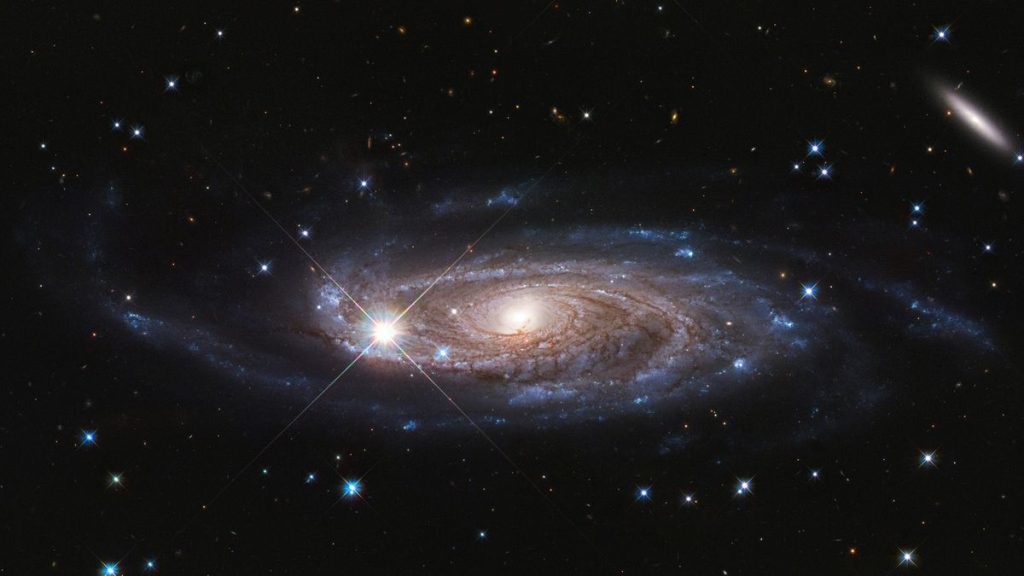Galaxies, vast conglomerations of stars, gas, dust, and dark matter, are the building blocks of the universe. From majestic spirals to enigmatic ellipticals, galaxies come in a variety of shapes and sizes, each harboring billions to trillions of stars. In this article, we will embark on a journey through the cosmic landscape of galaxies, delving into their formation, structure, and extraordinary diversity that continues to intrigue astronomers and enthusiasts alike.
What is a Galaxy?
A galaxy is a massive system of stars, stellar remnants, interstellar gas, dust, and dark matter bound together by gravity. These cosmic islands range in size from dwarf galaxies containing just a few million stars to giant galaxies hosting hundreds of billions of stars. The study of galaxies, known as galactic astronomy, plays a fundamental role in our understanding of the universe’s structure and evolution.
Types of Galaxies:
1. Spiral Galaxies:
– Spiral galaxies are characterized by their distinct spiral arms, which wrap around a central bulge. These galaxies often exhibit a flattened disk shape, with young, hot stars found in the arms and older stars residing in the central bulge.
– The Milky Way, our home galaxy, is a classic example of a spiral galaxy, featuring a prominent central bulge, spiral arms, and a supermassive black hole at its core.
2. **Elliptical Galaxies:**
– Elliptical galaxies appear as smooth, elongated blobs lacking any discernible structure or spiral arms. They range in shape from nearly spherical to highly elongated, with their stars orbiting in random, elliptical paths around the galactic center.
– M87, located in the Virgo Cluster, is one of the largest and most massive elliptical galaxies known, harboring a supermassive black hole at its core and emitting powerful jets of plasma visible in radio wavelengths.
3. **Irregular Galaxies:**
– Irregular galaxies are a diverse group that does not fit neatly into the categories of spiral or elliptical galaxies. They often exhibit chaotic shapes and lack a defined structure, resulting from interactions with neighboring galaxies or other cosmic phenomena.
– The Large and Small Magellanic Clouds, satellite galaxies of the Milky Way, are prime examples of irregular galaxies, showcasing vibrant regions of star formation and nebulae.

Galactic Structure and Dynamics:
The structure of a galaxy is governed by the distribution of stars, gas, and dark matter within its gravitational field. Spiral galaxies typically consist of a central bulge surrounded by spiral arms, while elliptical galaxies lack such distinct features. The motion of stars and gas within a galaxy is influenced by its gravitational potential, with stars orbiting the galactic center at varying speeds depending on their distance from the center.
Dark Matter and Galactic Halos:
Dark matter, an elusive form of matter that does not emit, absorb, or reflect electromagnetic radiation, plays a crucial role in the formation and evolution of galaxies. Observations suggest that dark matter dominates the mass of galaxies, forming extended halos that envelop the visible components. These halos provide the gravitational glue that holds galaxies together and influences their large-scale structure.
Galactic Collisions and Mergers:
Galaxies are not static entities but instead undergo dynamic interactions with one another. Galactic collisions and mergers occur when two or more galaxies come into close proximity, resulting in dramatic gravitational interactions. During a merger, galaxies can undergo significant transformations, with their stars, gas, and dark matter mingling and rearranging to form new structures.
The Role of Galaxies in Cosmic Evolution:
Galaxies are not isolated entities but are interconnected through cosmic webs of dark matter and filaments. Over billions of years, galaxies evolve through mergers, interactions, and star formation, shaping the cosmic landscape we observe today. Studying the properties and behaviors of galaxies provides valuable insights into the universe’s past, present, and future.
Galaxies, with their immense size, complexity, and diversity, are the fundamental building blocks of the cosmos. From the graceful spirals to the enigmatic ellipticals, each galaxy tells a unique story of cosmic evolution and transformation. As astronomers continue to probe the depths of the universe, galaxies remain a source of fascination and wonder, inviting us to explore the vast cosmic realms that stretch beyond the limits of our imagination.

